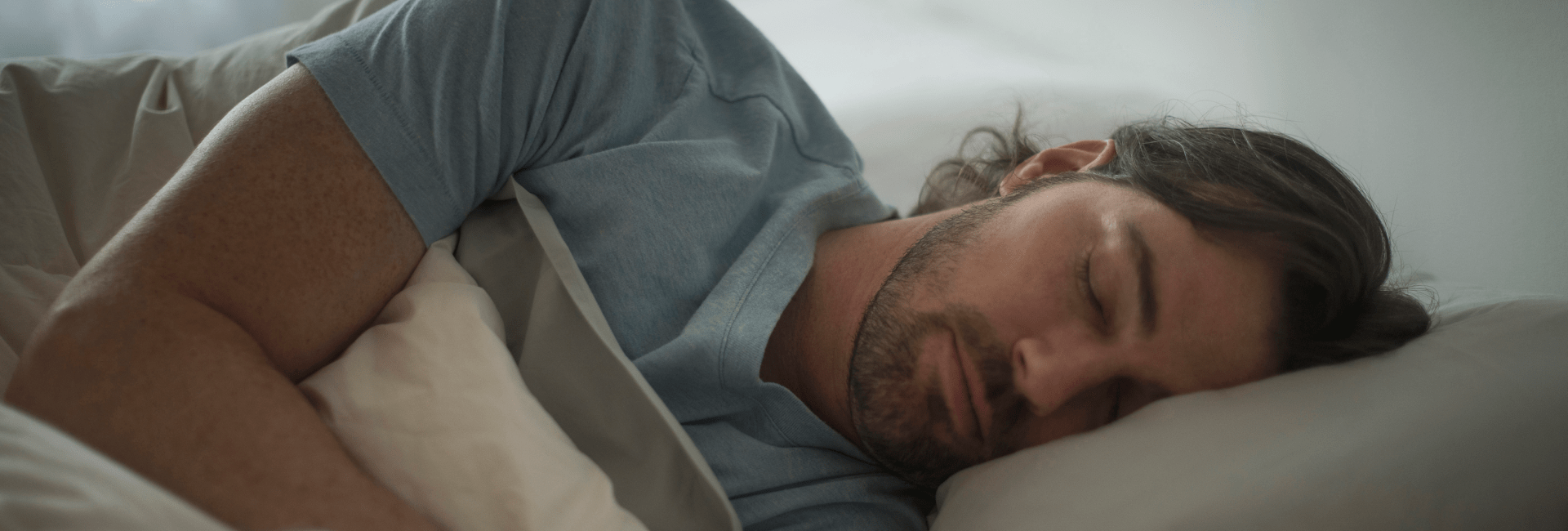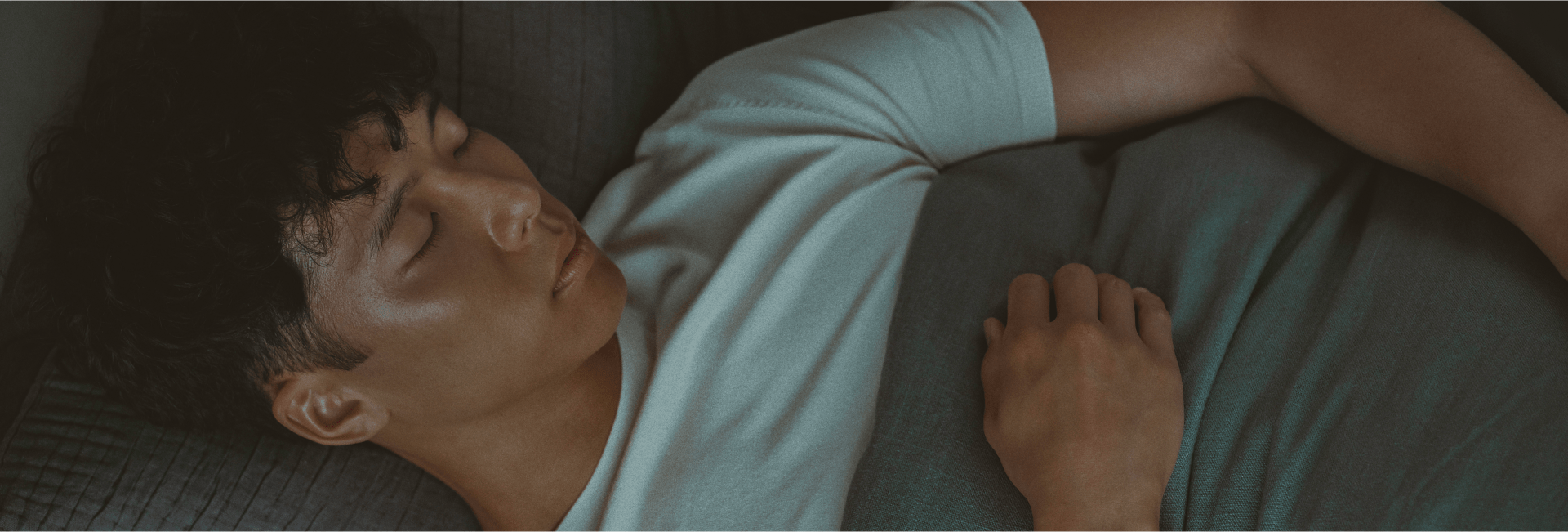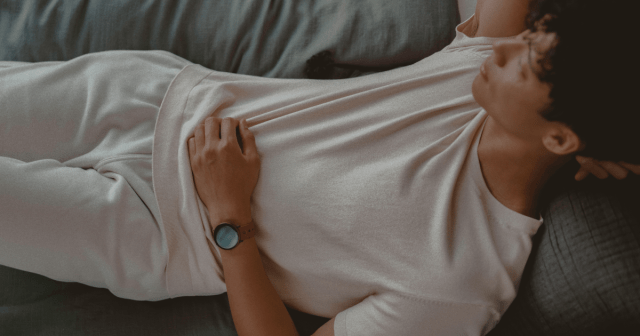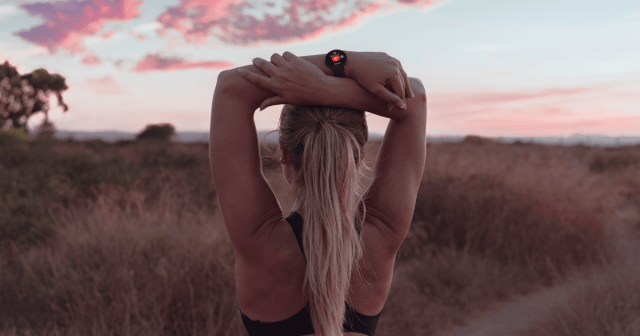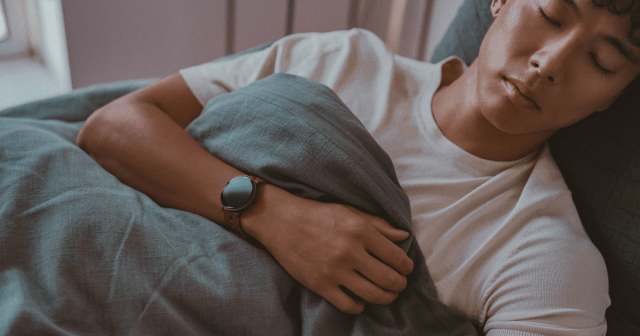When the days get longer and temperatures soar, you make all kinds of plans. Weekend hikes in leafy forests, afternoons on sunny beaches, evenings spent socializing with friends. But if you cast your mind back to last summer, you might remember another thing to prepare for: how to sleep in the heat.
Warm weather is a common cause of sleep disruption. Tossing and turning in the humidity, feeling sweaty and sticky, struggling to fall and stay asleep – yup, being too hot to sleep is a nightmare. On top of this, we tend to sleep less overall in the summer, increasing the chance of having sleep debt.
Anonymized data from Polar Flow users over the past few summers has shown that it is the season when we get the least sleep. Longer days mean we often go to bed later. While this means we tend to push our wake time, we also sleep less. On average, this data shows that we have 15 minutes less sleep every day during June. That’s a whole night’s sleep across that month, which can enormously impact how you feel and your ability to focus.
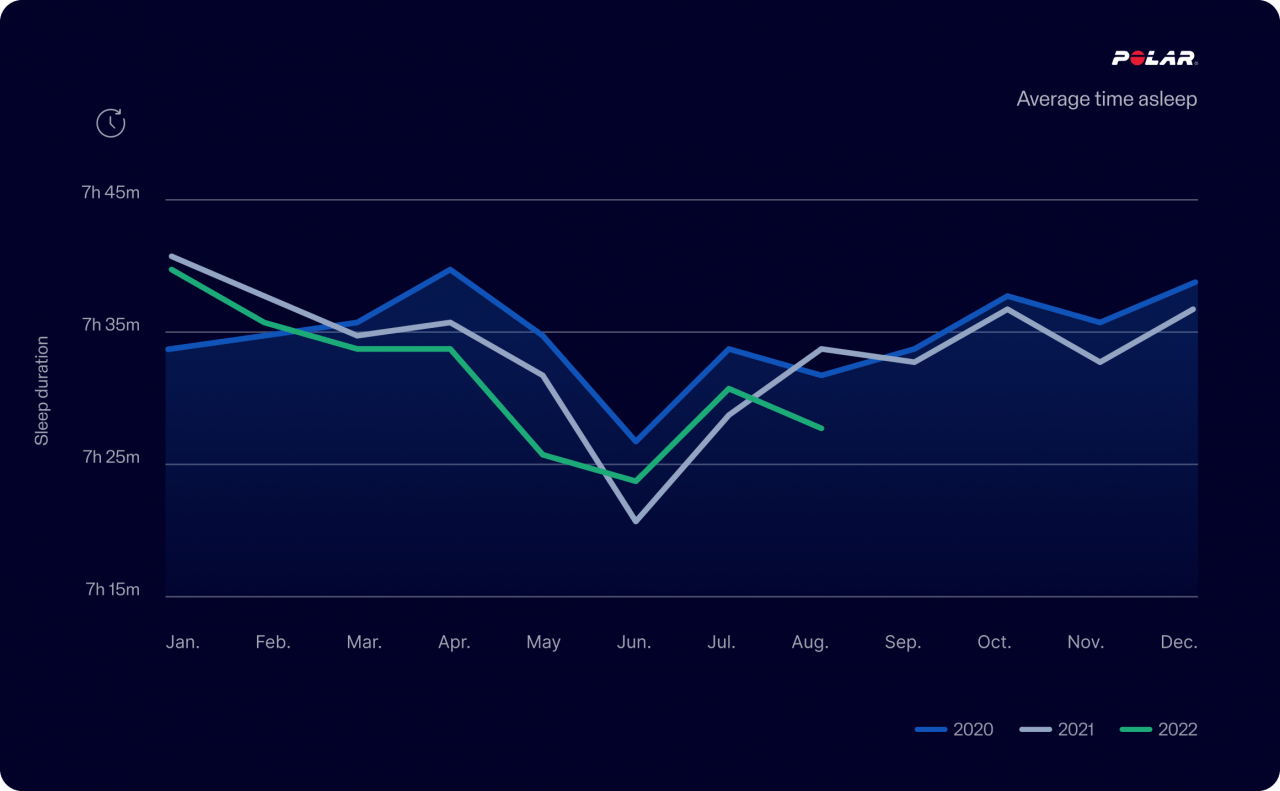
So, learning how to sleep in the heat and maintain good sleep hygiene in the summer is essential for ensuring you have the most energy to enjoy everything the warmer months offer. In this blog, we’ll look at the connection between body temperature and sleep, the ideal temperature for sleeping, how heat can affect the quality of your rest, and essential tips for cooling down your bedroom in the summer.
The connection between body temperature and sleep
Have you ever felt chilly before sleeping but woken up warm and toasty? Sure, this probably had something to do with how snuggly your bedding is, but you’d be surprised how much this has to do with your sleep-wake cycle.
Thermoregulation is how your body maintains your core temperature, ensuring it can keep running as usual in even the most extreme changes to the environment around you. That’s why your body can quickly adapt to leaving an air-conditioned store and walking out into the blazing sunshine.
This process of thermoregulation operates on a circadian cycle that is roughly 24 hours, in the same way as your sleep-wake cycle. They work together throughout the day to regulate your alertness and energy levels. For example, in the evening, your body produces a hormone called melatonin about two hours before bed to make you drowsy. At the same time, you will experience a slight drop in your core temperature (around 1 to 2 degrees Fahrenheit lower), so you feel like curling up in bed.
Similarly, as your body begins to stir in the morning, your core temperature will again rise to prepare you to be awake and alert. It’s like your body uses temperature to put you into sleep mode and then to activate you again as if you were a computer. That’s why it’s never a good idea to exercise, eat a big meal, or drink alcohol right before bed. Each of these activities will raise your core temperature, which is the opposite of what you need at this time of day.
Nightly Skin TempeRature Sensing
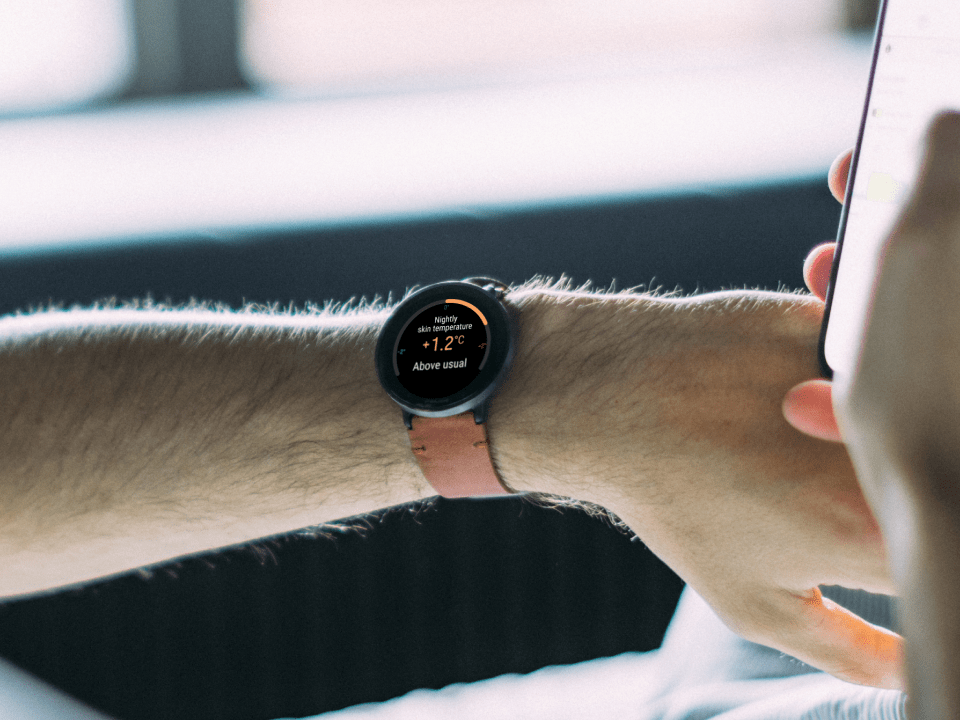
Polar Ignite 3 and Polar Ignite 3 Titanium are equipped with nightly skin temperature sensing, a feature that allows you to track your temperature throughout the night and provides daily updates compared to your average from the previous 28 days, which you can interpret for health insights. For example, temperature rises are often a sign of illness, together with heart rate variability or breathing changes. Women can also use these temperature insights to better understand which phase of their menstrual cycle they are in.
Curiously, wrist skin temperature shows opposite patterns compared to core body temperature. So, your wrist skin temperature increases when your core temperature decreases, and this is due to thermoregulation mechanisms.
It’s also interesting to note that one particular stage of sleep is strongly influenced by body temperature. According to research from UCLA in 2022, warm-blooded animals with higher body temperatures (like birds) have lower amounts of rapid eye movement (REM) sleep, while those with lower body temperatures (like platypus or echidna) have more REM sleep. We humans sit somewhere around the middle with an average body temperature of 98.6°F (37°C) and around 2 hours of REM sleep each night.
The best temperature for sleeping
While the weather outside may change with the season, there is, in fact, a consistently ideal temperature for your bedroom. 65°F (18.3°C) is the best sleep temperature, give or take a few degrees for personal preferences. So, ensuring your bedroom is between 60 to 67°F (15.6 to 19.4°C) will help you drop off into slumber in the evenings.
This ideal temperature is why people sleep better during the winter months. With longer and cooler nights (plus more control over your home’s climate), it’s easier to find a comfortable temperature for sleeping. If you’re heating your home, remember to let the temperature drop later in the evening to help signal to your body that it’s time for rest.
Why heat affects our sleep
As we have seen, body temperature significantly affects our ability to fall asleep. If your core temperature cannot drop by a few degrees Fahrenheit an hour or two before your regular sleep time, it will be hard for your brain to know if you’re ready for sleep. That’s why it can take longer to drift off on a warm summer’s evening if you are sleeping in a hot, humid bedroom.
Even if you can fall asleep in such an environment, the heat will likely affect the quality of your sleep, especially the amount of time you can spend in the restorative sleep stages. The slow drop in your core temperature helps you fall asleep and reach slow-wave sleep, known as NREM stage 3.
During this deep sleep stage, your body repairs and grows tissue, muscle, and bone, so it’s a significant time each night. However, if you’re too hot while you sleep, you are more likely to stay in a lighter stage of sleep, such as NREM 1 or 2, where you’re more likely to be woken up. That’s why you often toss and turn during a hot night, as you aren’t having the same quality of sleep as you would on a typical night.
You’ll usually experience most of your REM sleep towards the end of the night. This stage of sleep is very different from the others and, as noted above, has a particular relationship to temperature. As your brain experiences active bursts and you do some deep dreaming, your body goes into sleep paralysis.
That means most of your temperature regulation through behaviors like sweating or shivering stops. So, if you are in a room that is too warm, your body won’t spend as long in REM sleep as it usually would because it needs to get back to maintaining your core temperature instead.
Again, REM sleep is pretty vital. It helps us emotionally regulate and process memories from the day, so reducing time spent in this stage will significantly affect your sleep quality. It’s likely that after a restless night of predominantly light sleep, feeling frustrated by heat and humidity, you will wake up groggy and tired, perhaps in a bad mood and unable to concentrate. That’s why it’s vital to mindfully prepare for sleeping in the heat during the warmer months.
How to sleep in the heat
The quick fix to all your sleep problems is to blast your air-conditioning, right? Well, chances are your bank account won’t thank you, let alone the environment. So, what can you do to stop yourself from overheating at night? Here are some techniques to try.
Keep your bedroom cool and dark
In the morning, letting the sunlight in is essential so your body knows it’s time to wake up. However, if you aren’t spending the rest of the day in your bedroom, keep the windows, shutters, and blinds closed so it doesn’t let the heat in.
Once the temperature has dropped in the evening, you can open a window. Let some cooler air circulate so your room doesn’t feel stuffy and hot while you sleep.
Opt for breathable bed linen
In the warmer months, you should pack away your heavy comforter, duvet, and blankets and switch up any polyester or satin bedding for natural fibers. Cotton, linen, and bamboo sheets allow air to flow freely through them, making them more ‘breathable.’ These fibers will help your body to regulate its temperature more efficiently by ensuring heat isn’t trapped between you and your bedding.
Stick to your sleep routine
As the warmer months roll in, you may think having a siesta during the middle of the day is a good idea. Or that a later sunset = a later sleep time. However, sticking to your regular sleep times, even during the summer months, and avoiding naps where possible will help your body to keep to its normal schedule.
Switch on a fan
While a fan won’t cool down the temperature of your room like air conditioning will, it will keep the air circulating in your hot bedroom while you sleep – and for a fraction of the cost. Anything from a ceiling fan to a small desk fan will help create a wind-chill effect by pushing air over your body.
Top heat hack: when you go to bed, place a bowl of ice in front of a desk fan so that it blows icy air across the room. It’s a refreshing way to replicate air conditioning without the hefty cost.
Have a warm shower at night, not a cold one
After a hot sticky day, you probably think a cold shower is what you need to help lower your core temperature before bed. In fact, a cold shower at night could make the situation worse. This cooling blast will temporarily decrease blood flow to your skin, but once you’re out of the shower, it will start again, making you feel just as hot.
A warm shower before bed will do the opposite: increasing blow flow to your skin which will, in turn, help you to lose heat from your body. That means you can then jump into bed, having helped your core temperature to lower slightly, and hopefully fall asleep faster.
Chill your bedding
If getting into bed on a hot evening seems unbearable, make it into your chill zone. Some people pop their sheets or pillows in a bag in the fridge (or even the freezer) for around 20 minutes before they go to bed to help cool things down. Another option is to put cool water into your hot water bottle each morning, place it in the freezer and then use it as a chilling device throughout the night.
Chill out, too
Stressing about how the heat may affect your sleep won’t help you rest any better, so don’t fret if you’re struggling to drift off. If you become agitated as you toss and turn, why not try a sleep meditation to help your mind relax? Make peace with the weather and find your calm because, after all, you have no control over the seasons.
Ready to master the art of sleeping in the heat?
If one thing stands out about trying to sleep during the summer months, it’s how proactive you need to be. Understanding how soaring temperatures will impact the quantity and quality of your rest will mean you’re more likely to be prepared as the seasons change.
The good news is that most of the heat hacks listed above are simple and inexpensive. From keeping your blinds closed during the day to sleeping with a frozen water bottle at night, you can easily make small changes to ensure that you navigate through the warmer months and hopefully enjoy a decent night’s sleep for the most part. And if you struggle, know that cooler, darker evenings are always on their way.
And when nothing works during those tropical summer nights, and you wake up feeling hot and sticky in the morning, a cold shower (or diving in the pool if you’re that lucky) is absolutely something you’ll enjoy even more. Not only will the chilly temperature feel refreshing and relaxing, but it will also make you feel awake and alert. It’s one of the many benefits of cold showers.
If you liked this post, don’t forget to share so that others can find it, too.
Or give it a thumbs up!
I like this article
Please note that the information provided in the Polar Blog articles cannot replace individual advice from health professionals. Please consult your physician before starting a new fitness program.
